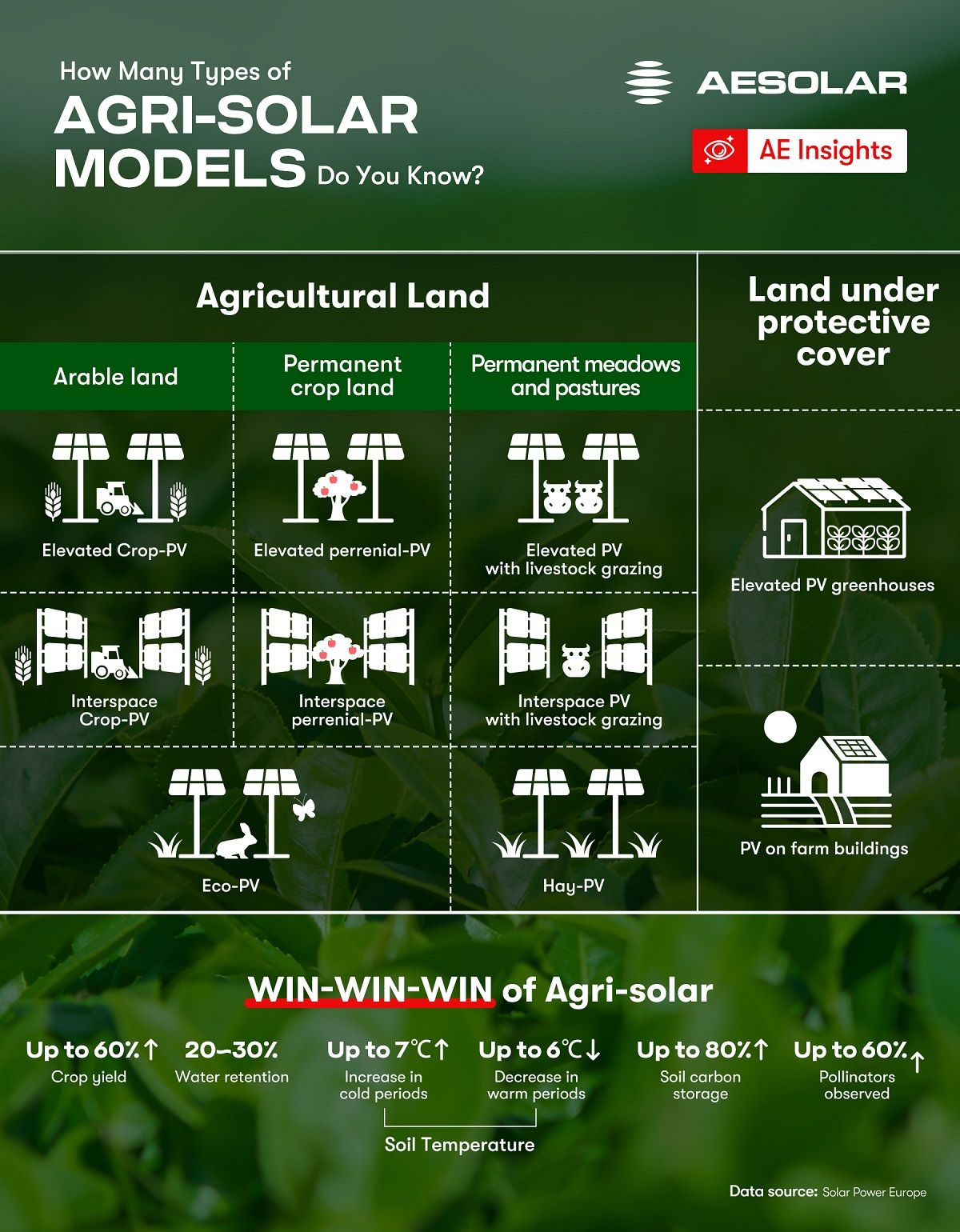European agriculture is currently facing immense challenges, from rising operational costs and volatile markets to the growing impact of climate change. Extreme weather patterns, heatwaves, droughts, and storms have disrupted traditional farming practices, leaving farmers in search of innovative solutions to secure their livelihoods and adapt to the changing environment.
One such transformative solution is Agri-solar (also known as Agrivoltaics), an approach that integrates solar photovoltaic (PV) systems with agricultural activities to create a synergy between renewable energy production and sustainable farming. By combining these two elements, Agri-solar enhances land-use efficiency, promotes biodiversity, and supports farmers with both environmental and economic benefits.
What is Agri-Solar?
Agri-solar, also referred to as Agri-PV, is a dual-purpose land-use system that enables agricultural activities and solar energy generation to coexist. This innovative approach includes a variety of configurations, such as installing solar panels above crops, between crop rows, or on agricultural buildings like barns and greenhouses. Agri-solar projects are tailored to meet the unique needs of different farms and land types, creating opportunities for sustainable energy production while preserving or enhancing agricultural productivity. Explore the 10 key forms of Agri-solar at the infographic attached:

How Agri-Solar Boosts Farmers' Revenues
Agri-solar doesn't just redefine land use—it reshapes the economics of farming by unlocking diverse revenue streams. By integrating solar energy systems into agricultural activities, farmers can transform traditional practices into resilient, future-proof, and more profitable operations. Here are some of the ways agri-solar boosts farmers’ incomes:
- Increased Crop Yields: Agri-solar systems can create a microclimate that protects crops from extreme weather conditions. According to SolarPower Europe, yields can increase by up to 60%, ensuring farmers not only preserve but enhance food production.
- Agricultural Subsidies: Farmers remain eligible for subsidies, ensuring a steady income while transitioning to agri-solar. In many cases, this includes support for eco-friendly practices and manure rights, depending on national regulations.
- Ecosystem Services: With the rise of carbon markets, farmers can generate revenue by monetizing ecosystem services like carbon credits or other eco-schemes. This incentivizes sustainable practices while delivering financial returns.
- Land Lease Agreements: Through partnerships with solar energy developers, farmers can earn income by leasing portions of their land during the operation phase of solar projects.
- Maintenance Services: Agri-solar systems create new job opportunities for farmers, who can be hired to manage tasks like module cleaning, vegetation control, and system inspections.
In addition to these revenue streams, agri-solar strengthens economic stability. A farm integrated with renewable energy production becomes more resilient to market fluctuations, weather anomalies, and operational challenges. This stability often improves farmers’ access to financing for future projects, creating a positive cycle of innovation and growth.
AESOLAR solutions
AESOLAR is proud to be at the forefront of this movement, supporting farmers with solutions that are as sustainable as they are profitable. Both solutions embody AESOLAR’s commitment to sustainability, German engineering excellence, and a vision for harmonizing agriculture and renewable energy. Click here for a detailed look at AESOLAR’s Terra series solutions.
